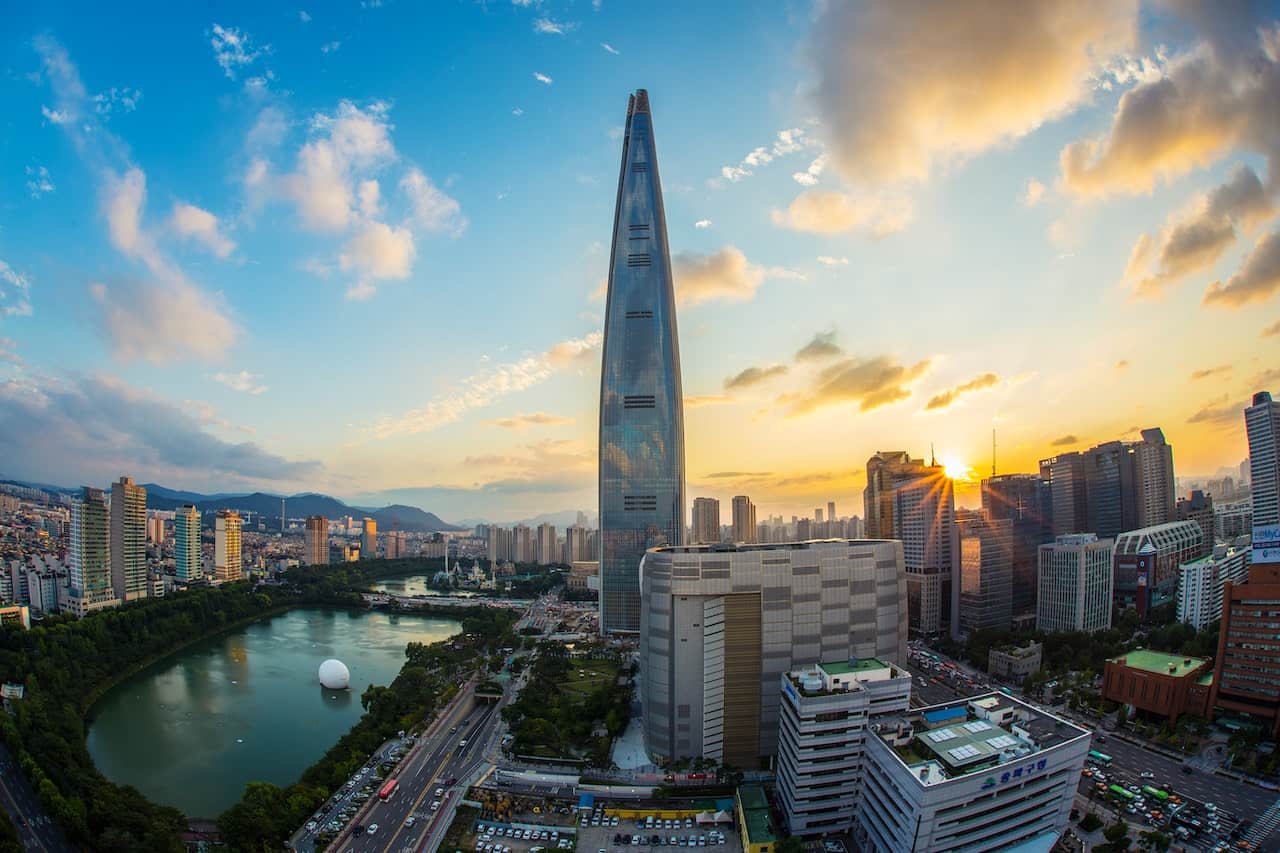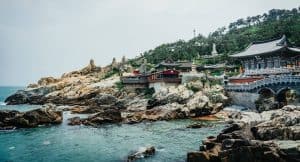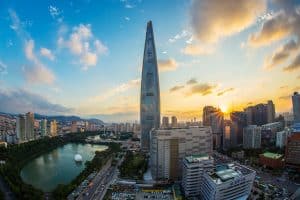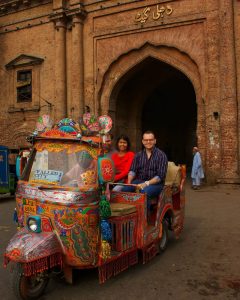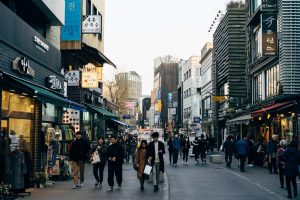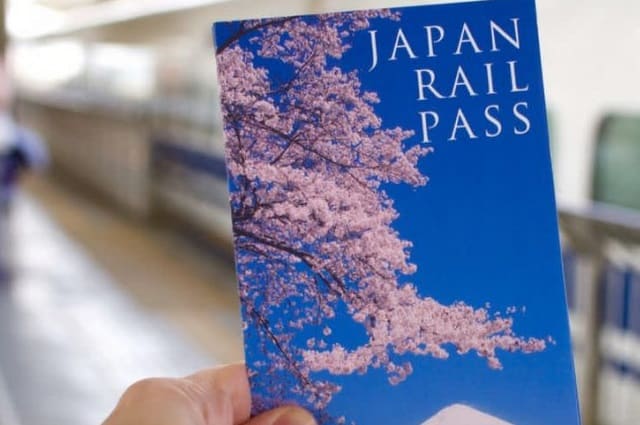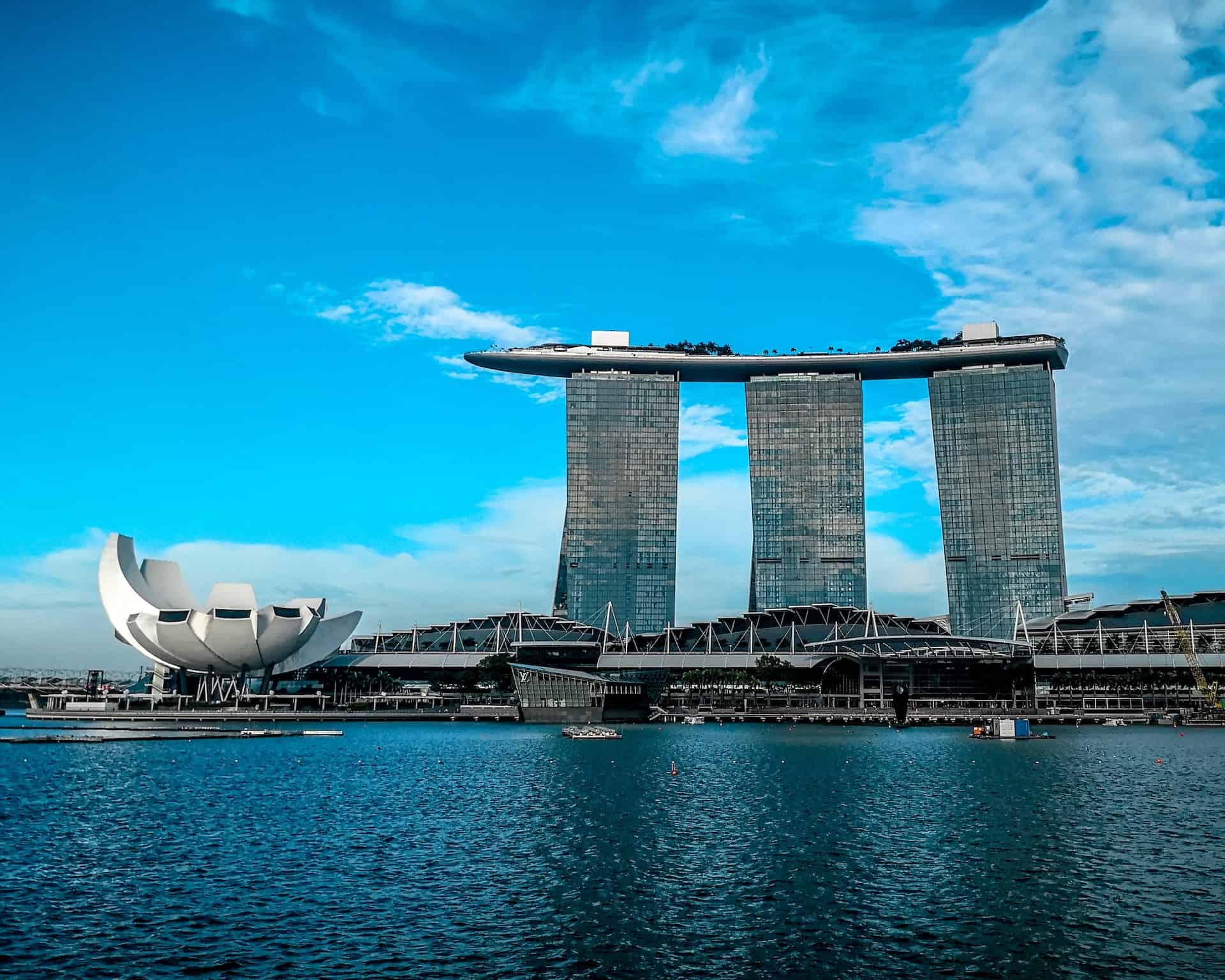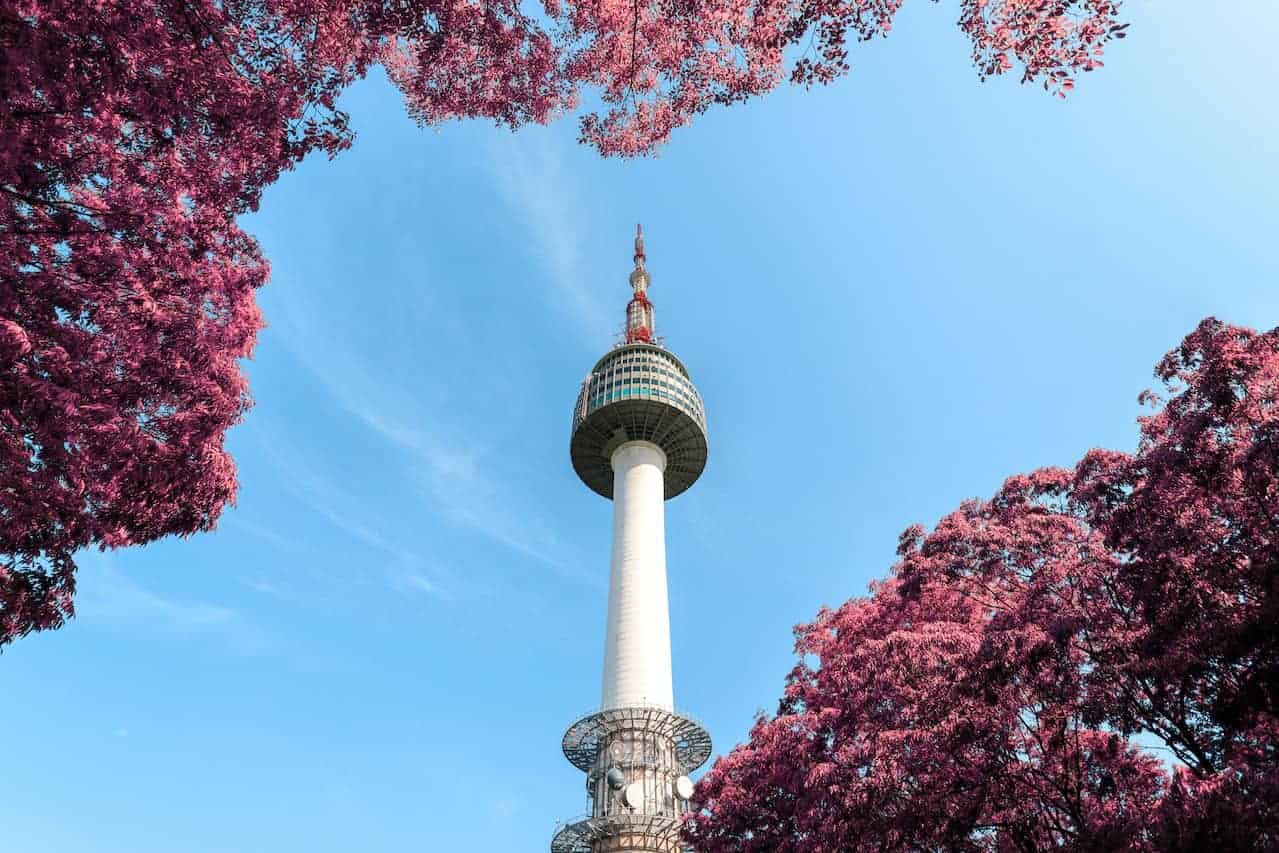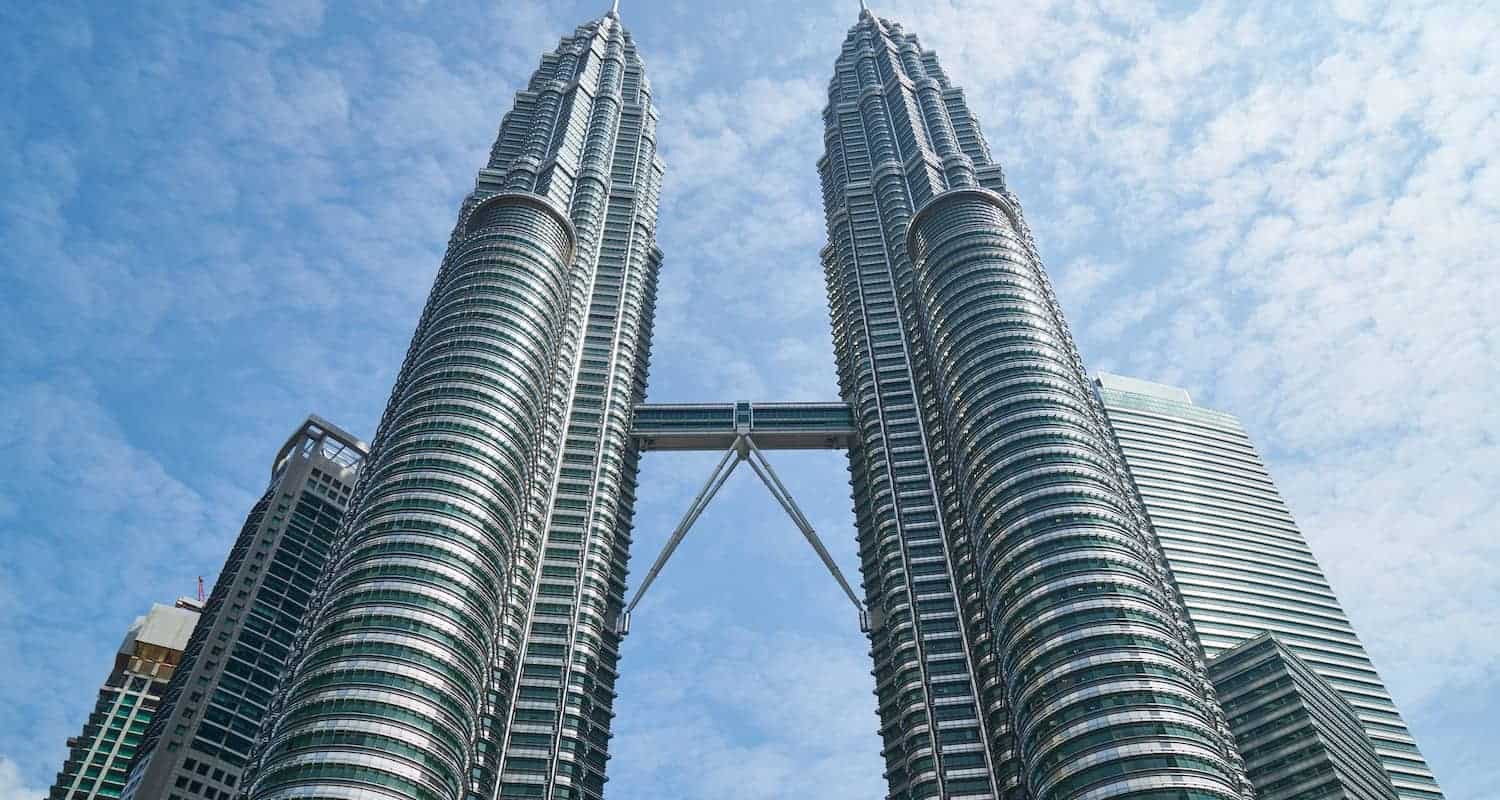A Digital Nomad Guide To South Korea
South Korea is ideal if you’re a digital nomad looking for your next destination. South Korea has a total area smaller than New York City. However, its population reaches over 50 million! Even though it is a small country, it could give its neighbor, Japan, a run for its money.
South Korea has quickly become one of Asia’s most technologically advanced countries. From tall skyscrapers to unique landscapes, the country has it all. Despite its modernization, the country and its population still manage to conserve its history and culture.
This article will take you through everything you need to know about living in South Korea as a digital nomad. I hope that by the end of this article, you will be able to decide if South Korea is the country for you or not.
The Visa Process

Entering South Korea Without a Visa
If your country comes under the list of countries requiring a visa to enter, you must apply for your visa beforehand. However, most people can enter Korea without a prior visa and get a visa on arrival at the airport.
Alternatively, if you are entering the country by train or bus, you can apply for a visa at the South Korean embassy or consulate.
Digital Nomad Visas
To live and work in South Korea as a digital nomad, you must have a valid work visa. South Korea calls this the “Work Permit,” and you must apply for this before entering the country.
You can apply for the South Korean Work Permit at the immigration office in your own country. Alternatively, you can also apply for it at the Korean Immigration office.
You must have a verified employer in your home country to get a work permit. This permit lets you work in South Korea without any hindrances. Although, it cannot be used for tourism or study purposes.
Can Digital Nomads Stay in South Korea on a Tourist Visa?
Yes! As a digital nomad, you can stay in South Korea for up to 60 days at a time on your tourist visa. You can get a visa on arrival or apply for it beforehand. However, you must leave the country once your 60-day period ends.
If you stay in South Korea for more than 60 days, you must exit the country temporarily and re-enter. Once you re-enter, your 60-day period will restart, and you can spend another 60 days there. Recently there is new about a new digital nomad visa, read more about there here.
Weather in South Korea
Being a small country, the general climate is the same regardless of which city you choose to stay in!
South Korea’s climate is primarily temperate, but the country is blessed with all four seasons. This is a massive advantage because you can choose when to visit the country based on your preferred season.
Summer in South Korea is quite humid, with temperatures fluctuating between 25-30℃. However, it feels much hotter due to the humidity. This is the perfect time to hit the beach or go for a nice swim to cool down in the water.
Autumn weather is much more pleasant, with temperatures staying between 10-20℃. The cool, dry climate makes it the perfect time for outdoor activities like hiking.
Winter season in South Korea can get quite chilling. Snowfall is a must, and the temperature range between -5-5℃. Sometimes, they can even drop to as low as -20℃. The snow does provide the perfect opportunity to go skiing!
Spring is probably the most beautiful season here. The extreme temperatures start to subside. The highlight, however, is the cherry blossom trees scattered throughout the country. The pink flowers on these trees make them look dreamy and perfect for gorgeous pictures.
Transport System of South Korea
Whether intra city travel or intercity, getting from one place to another is relatively easy in South Korea. The country has a very efficient public transport system that is much cheaper than its neighbor, Japan.
Subway System
For traveling within the city, this is probably the cheapest and most efficient way to travel. The subway system is extensive (especially in Seoul) and can get you anywhere within the city.
Although, I would recommend avoiding the subway during rush hours, between 4 -6 pm. The trains can get extremely crowded, don’t be surprised to be pushed around, and you often have to wait a long time for the next train.
Subway fares start at 1.2 USD and increase depending on how far you travel.
To save money, I recommend getting a T-Card. This card only costs 2.2 USD, but it gives you the best deals on travel fares and can even be used to pay for taxis, and certain stores.
Local Taxis
Taxes are a great alternative if you wish to save travel time and have extra money. Unfortunately, Uber and Grab do not operate in South Korea, so you must use their local taxis. These taxis are readily available throughout the country. Using other taxi apps can be difficult, as many require a local id for verification.
However, taxi drivers are usually older men who do not know how to speak English. Therefore, I recommend you at least learn some essential Korean or make Google Translate your best friend. Have the address ready, or pulled up on your kakaomap or navermap.
Taxi fares can range between 4-15 USD for short-distance travel.
InterCity Trains
These are high-speed trains meant to take you from one city to the other in a short time.
Usually, a train from Seoul to Busan would take about 5.5 hours. The high-speed trains cut this time to less than half, getting you to Busan in 2 hours.
This provides digital nomads with the perfect opportunity to explore all of South Korea rather than just a single city. The train tickets vary depending on the distance and travel time. However, they are always below 100 USD.
WiFi Connection & Internet in South Korea

Living as a digital nomad, your entire career is online! So, having a good WiFi connection becomes a must.
WiFi in South Korea is one of the fastest in the world, with its broadband speeds ranking as 2nd best across the globe.
Korean Food
Korean food deserves an honorary mention, in my opinion. I am sure you’ve heard about Korean BBQ before (and may have even tried it). Regardless of what part of the world you may be in, you’ll always find at least one Korean-themed restaurant serving Korean BBQ.
Well, living in South Korea means you get to try authentic Korean BBQ. It’s worth the hype. The tender and juicy meats are delicious, but the wide variety of side dishes makes it better
You can find Korean BBQ at fancy dining restaurants or in roadside restaurants. I recommend opting for roadside restaurants to truly taste their authenticity. Plus, roadside restaurants are cheaper as well. You will find that most of the good food is inside of neighborhoods and not the main walking streets.
Cost of Living in South Korea
South Korea is one of the world’s most modernized and advanced countries. Keeping this in mind, the cost of living in South Korea is simply a fraction of the cost in Japan or other developed countries.
A monthly budget between 1500-2000 USD should be more than enough for you to live in any city in South Korea. Based on your preferred city to live in, a single-bedroom apartment can cost as low as 500 USD a month.
Monthly transport costs would be between 150-200 USD on average. Essential utilities come out to 200 USD, and food and leisure costs can range between 600-800 USD.
Finding Accommodation
Apartments throughout South Korea are generally relatively small due to the country’s limited space and large population. If you want a bigger apartment, you’ll have to dish out good money for it.
Airbnb, Dabang and Jikbang
Airbnb, Dabang, and Jikbang are popular sites to find apartments. They provide reliable pictures and the realtor’s contact info to connect with them directly. These are great options if you’re looking to rent apartments for a short time.
You can find a studio apartment on Airbnb for as little as 470 USD a month because many realtors offer significant discounts if you rent out the space for a month or more.
Craigslist
Craigslist is also very popular in Seoul and provides much cheaper alternatives. Plus, the site is in English, so it’ll be much easier for you to navigate.
Coliving Spaces
Coliving spaces in South Korea are still a relatively new concept. Although, it has been on the rise recently. Coliving spaces provide you with an excellent opportunity to interact with like-minded individuals.
You’re also more likely to find a better living option if you opt for a shared space. To find the ideal coliving space for you, join the coliving movement.
Hostels and Dorms
Dorms and Hostels can be great alternatives as well. Often young individuals visiting South Korea for a short time opt for these options. The rates are the cheapest out there, and you can rent them out daily as well. Use hostelworld.com and booking.com for this
This might be an excellent option if you are a young digital nomad. Not only will you save up on some cash, but you’ll also get to meet many people your age and form close bonds with them.
Best Cities in South Korea for a Digital Nomad
I’ll discuss the top three cities of South Korea for a digital nomad.
1. Seoul

Yes, it is the most obvious answer, but honestly, rightfully so. Seoul is one of the most developed cities in Asia and the most developed city in South Korea. South Korea’s capital has everything from tall skyscrapers to beautiful parks.
It is home to almost 10 million people, and most of its residents speak English. So communicating and getting around would not be an issue in Seoul. However, elderly taxi drivers will always be an exception. You could have trouble interacting with them as they only speak Korean.
Seoul has some of the best and most diverse food options in the entire country. Whether it be something as westernized as a burger or a more traditional fish cake, you’ll quickly find it all here. Seoul also has some interesting local food choices. These may not satisfy everyone’s palette, but they are worth tasting.
Moreover, living in Seoul will always keep you entertained. This city never sleeps, so if you are looking for entertainment or food late at night, you will undoubtedly find many options.
Seoul also has historic architecture for tourists to explore, such as Gyeongbokgung Palace and Bukchon Hanok Village.
Where to Live in Seoul?
Here are the five best places you could crash in Seoul.
1. Itaewon
Itaewon is the central part of Seoul and also the international center. It is full of foreigners. So , English is easily understood and spoken here. It is full of high-rise modern buildings and bustling nightlife.
However, this may not be the best option for experiencing authentic Korean culture. Plus, it is comparatively more expensive as well.
2. Dongdaemun
In Dongdaemun, you’ll find high fashion all around you. The area also has multiple malls, a cultural center, and a design plaza.
Dongdaemun gives off the big city vibe, like Itaewon, except you also get to interact and intermingle with the locals here. This is where you’ll find some of the country’s most modern and technologically advanced buildings.
3. Gangnam
You’ll surely recognize this name from the famous “Gangnam Style” song. Located in southeast Seoul, Gangnam is the fashion hub of the country.
There are also many restaurants and bars in the area. Plus, it is cheaper than Itaewon, but not as foreigner friendly.
4. Incheon
Located further outside the city center, Incheon is a much cheaper alternative. Although it is further out, you’ll still find multiple restaurants and local bars here.
Travel expenses may slightly increase if you constantly travel back and forth between the city center and Incheon.
5. Hongdae and Mapo
This is the university district of the country. This is an ideal place to live for young digital nomads since you’ll find many people around your age.
You’ll also find some cheap food options here. Since the more youthful generation mainly occupy this area, there is also some sort of event or concert happening here, so entertainment is taken care of.
Top 3 Coworking Spaces in Seoul
Seoul is full of passionate entrepreneurs, so being a digital nomad, you’ll fit right into their working scene.
Coworker helps you find the best coworking spaces near you. In my opinion, the following coworking spaces are a great option:
1. Hive Arena
Hive Arena is probably the best option for digital nomads as it is a coworking and coliving space.
Their daily passes cost only 9 USD, whereas their monthly passes are 270 USD. Plus, they often have exclusive discounts.
Hive Arena is also an international coworking space, so you’ll interact with foreigners and locals here. Unfortunately, this coworking space is located southwest of Seoul, so traveling to and from the area takes time (if you live in the city center).
2. WeWork
WeWork is an international coworking space quickly becoming a popular choice amongst remote workers.
Seoul contains over 10 WeWork venues, so there is a high chance that you’ll find one close to your accommodation.
WeWork prices are higher, with a simple hotdesk costing 330 USD. However, being a digital nomad, it is recommended that you opt for their membership so you can use their offices across the globe.
3. JustCo
Although it only has one location in Seoul, JustCo is an excellent option for business-minded individuals and digital nomads.
JustCo does not have any office hours and is open 24/7. This means that you can pull those all-nighters in a more productive space.
Plus, they often have ongoing social events as well. Their monthly package costs about 333 USD. However, they also have discounts going on.
2. Busan

For digital nomads wanting to experience city life but also a more peaceful setting, Busan is the ideal location. Busan is a coastal city with gorgeous mountains and many cultural sites. At the same time, it also has tall modern architecture and a great WiFi connection.
The public transport here is not as elaborate as that in Seoul. However, getting around is still accessible. It has many exciting places to explore, such as the Busan Tower, Beomeosa Temple, and the Gamcheon Cultural Village. So while you’re not working, make your way around the city and explore these gems.
You can also go to Haeundae Beach for a relaxing day off and visit the Sea Life Aquarium. Being a coastal city, Busan offers delicious seafood choices and is home to the biggest seafood market in the country.
Where to Live in Busan?
Here are the three places I believe are best to live in Busan.
1. Haeundae
Haeundae is a popular neighborhood in Busan, with most of its population consisting of foreigners and tourists. It has many great entertainment and shopping options.
There are multiple restaurants and bars, and the nightlife is fantastic. Plus, it is closest to the beach.
However, Haeundae is quite expensive to live in, and your interaction with Korean locals would be minimal. Therefore, if you want to experience proper Korean culture, this may not be the best fit for you.
2. Seomyeon
The city’s main downtown area is located right in the center of Busan, Seomyeon. It contains everything from financial to educational opportunities. Being the center of the city, public transport is the most elaborate here.
Living in Seomyeon comes with a higher price tag. However, you’ll save some money (and time) on travel. There are many shopping malls here and constant entertainment and leisure facilities.
The Seomyeon Market also offers a wide variety of local delicacies, ranging from Kalguksu to Dwaeji Gukbap. Street food options are multiple and much more affordable here.
3. Nampo-Dong
If you want to experience Busan in all its authenticity and beauty, Nampo-Dong is your place. This neighborhood has a wide variety of food and entertainment options. Tourists and locals love making their way here, so communicating in English should not be a hassle.
Due to its popularity, it is essential to note that Nampo-Dong remains crowded throughout the week. Therefore, this may not be ideal for you if you want a more peaceful setting.
Top 2 Coworking Spaces in Busan
1. The Cave Busan
The Cave provides the perfect opportunity to work in a highly productive environment. Although, their main focus is to maximize productivity while maintaining social interactions.
The space comes with an onsite cafe and all basic office amenities. It is also a 10-minute walk from local transport. Desks at The cave start at 230 USD a month.
2. Pathfinder
Pathfinder is located between Choryang Station and Busanjin station and provides a much cheaper coworking alternative. Monthly desk prices at pathfinder start at as low as 77 USD.
The space still comes fully equipped with all office amenities and free coffee. It is also open 24 hours, so don’t be afraid to put in those extra late-night hours.
3. Jeju Island
Although this may not sound like the typical spot for digital nomads, Jeju island is surprisingly famous amongst the community. If you wish to make your trip to South Korea peaceful without much social interaction, you’ll fit in here perfectly.
Jeju has well-developed infrastructure, multiple restaurants, and great coworking spaces for digital nomads despite being an island. It is also a UNESCO world heritage site. There are beautiful beaches and extraordinary wildlife here for you to explore.
Unfortunately, if you want to explore other parts of the country, you’ll have to fly from Jeju Island. Don’t worry; local flights within South Korea are pretty reasonable.
Where to Live on Jeju Island?
1. Jeju City
This is Jeju island’s capital and the mainland’s main entry point. It is full of many shopping centers, restaurants, and bars.
The central area is comparatively more expensive than other areas in Jeju. However, it is still much cheaper than the city centers in Seoul or Busan.
It gives you the city feel but also has many nature experiences at a short distance. You can rent an entire apartment for a reasonable price or save even more money and stay at the Yesjun Guesthouse.
2. Seogwipo City
Seogwipo City is a great, cheaper alternative for digital nomads on a strict budget. It has a very aesthetic rustic vibe to it. It is also home to Jeongbang Falls, the only waterfall in Asia that falls into the ocean.
Digital nomads can rent out the Seogwipo City New Town Accommodation on Airbnb or opt for the Seom Guest House as a more budget-friendly option.
Coworking Space on Jeju Island
J-Space
J-Space is a free coworking space in Jeju city. This startup incubator aims to draw more digital nomads toward the town.
Despite being on an island, J-Space is fully equipped with all basic office facilities and high-speed Wi-Fi. There is also free coffee available on-site to keep your energy going!
10 Things to do in South Korea
South Korea has a wide variety of things to offer its visitors. Here are some of the most popular activities to indulge in, in South Korea:
- Have a Crazy Night Out in Gangnam
- Eat Seafood in Busan
- Shop til you drop in Hongdae, Incheon, and Myeong-dong
- Visit the Colorful Village of Gamcheon
- Explore Jeju Island
- Eat K-bbq
- Take a daytrip to the Haedong Yonggungsa Temple
- Visit the Green Tea Fields in Boseong
- View Cherry Blossoms in Spring and capture their beauty.
- Trip to the mesmerizing Seoraksan National Park
Pros and Cons of Living in South Korea as a Digital Nomad
Pros
- The WiFi speed is the 2nd best in the entire world
- It is much cheaper compared to Japan
- Extremely modernized and advanced architecture
- Great chance to experience Korean culture
- Korean BBQ is the best!
- Extremely safe for solo female travelers
- Experiences all four distinct seasons
- Perfectly organized local transport system
Cons
- It can get quite cold in the winter (not the ideal time to visit)
- Language can be a huge barrier sometimes
- Air pollution due to the increased population
- Traffic can get quite bad, especially during rush hours.
Final Thoughts
Overall, South Korea is a great option for digital nomads looking to explore Asia. The country is extremely technologically advanced but often overshadowed by its neighbor Japan. It is also extremely safe for women to travel alone regardless of the time or place.
Although the language barrier can cause hindrance, it’s nothing that google translate or papago cannot fix. Plus, it’ll give you a great opportunity to learn Korean.
Start Planning Your south korea Trip Now!
Book Your Flight:
Use Skyscanner to find a cheap flights. A travellers favorite way to book flights, as it searches websites and airlines around the world with one click.
Book Your Bus or Transportation Within South Korea:
There are two ways to book your transporation, ask your hotel or hostel, go to the local bus terminal, or book online, for a less stressful trip using EasyBook or 12go.asia
Book Your Accomodation:
Find the best hotels or hostels at HostelWorld, Booking.com, Agoda.com. Perks include with no upfront payment. Pay when you check out and Free cancellations.
Dont Forget Your Travel Insurance:
Two popular choices are SafetyWing and WorldsNomads. A traveler should buy traveler’s insurance to protect themselves against unexpected events such as trip cancellations, medical emergencies, and lost or stolen baggage. It provides peace of mind and financial protection in case of unforeseen circumstances.
Useful Apps?
KaokaoBus /K-Eta- Local Transportation
NaverMaps, KaoKaoMaps – GPS
Baemin and Yogiyo – Food Delivery
T-Money : Payments and Transporation
Papago – Translation
Whatsapp/KaoKao- Communication
Want More Information On South Korea?
Be sure to check out my nomad travel guide on the South Korea for even more tips.
Disclosure: Please note that some of the links above may be affiliate links, and at no additional cost to you, I earn a commission if you make a purchase.

